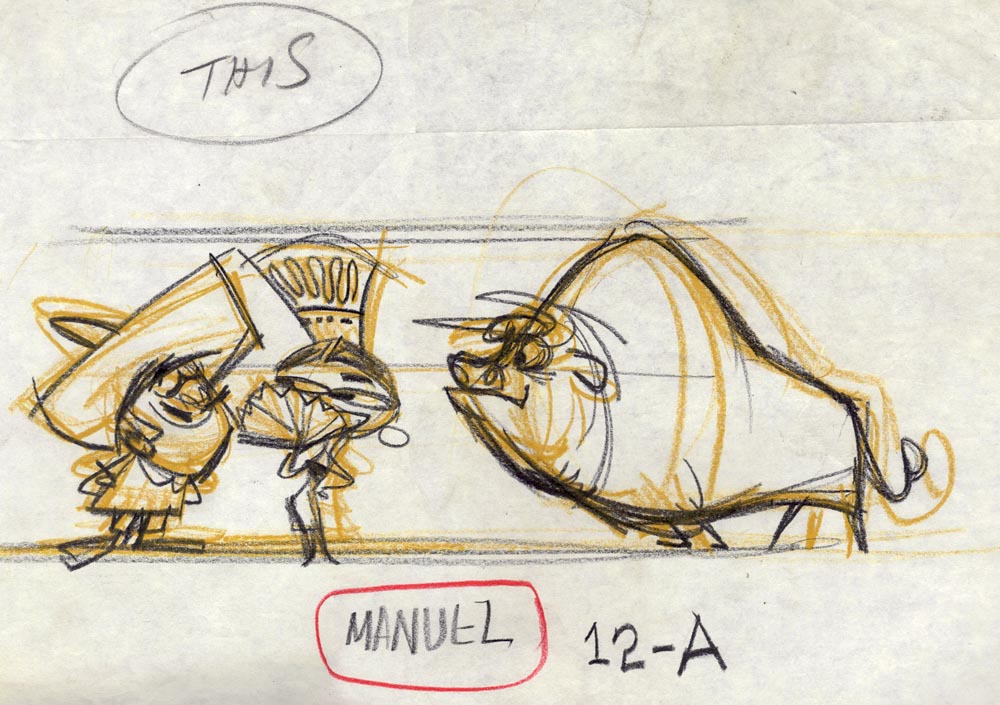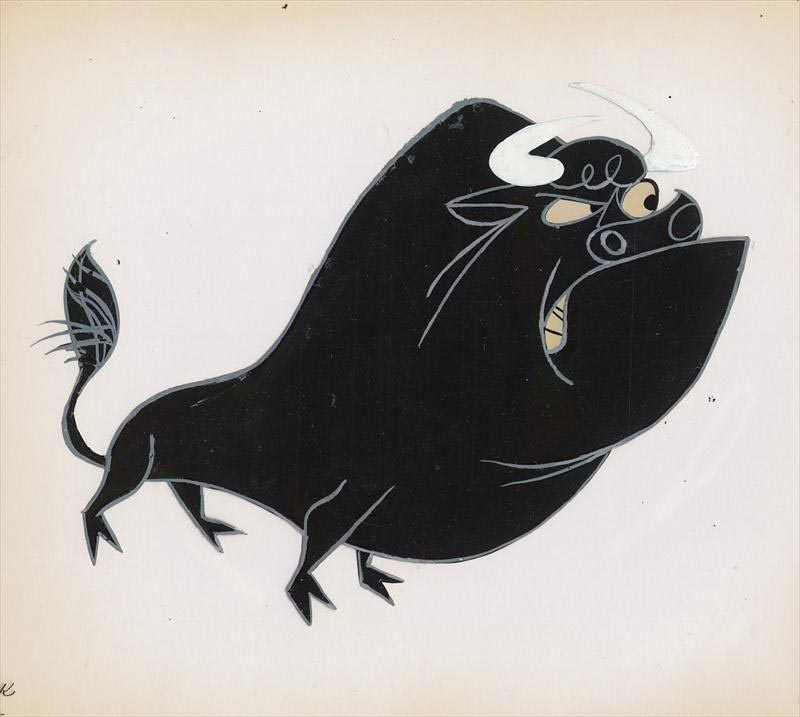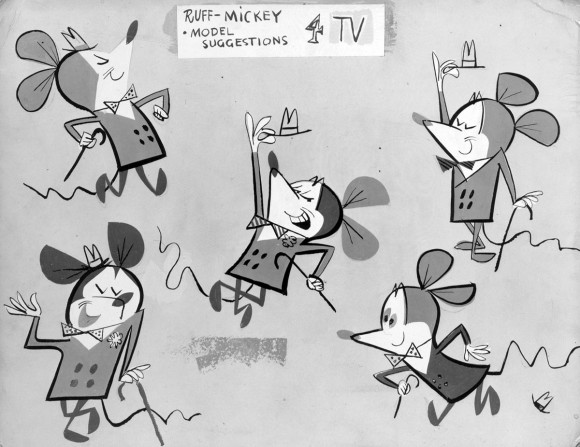A little Cartoon Modern inspiration for a Monday morning: these Donald Duck and Alice in Wonderland production cel/master backgrounds from mid-1950s Disney TV commercials are currently up for auction at Heritage Auctions. They’re affordable at the moment, but likely won’t be by the time the auction is over. The character designer on these spots was Tom Oreb (better known for his work on Sleeping Beauty, 101 Dalmatians, and Toot Whistle Plunk and Boom), and the background layout artist was Vic Haboush. (Disclosure: Heritage Auctions is an advertiser on Cartoon Brew.) Here are a few other characters and spots that Tom Oreb designed for Disney’s short-lived TV commercial unit:
Add a CommentViewing: Blog Posts Tagged with: Tom Oreb, Most Recent at Top [Help]
Results 1 - 6 of 6
Blog: Cartoon Brew (Login to Add to MyJacketFlap)
JacketFlap tags: Disney, Classic, Cartoon Modern, Tom Oreb, Victor Haboush, Add a tag
Blog: Cartoon Brew (Login to Add to MyJacketFlap)
JacketFlap tags: Cartoon Modern, UPA, Van Eaton Galleries, Tom Oreb, Victor Haboush, Bill Perez, Dick Tracy Show, Mike Van Eaton, Add a tag
A year or two ago, when I visiting Van Eaton Galleries in Sherman Oaks, the gallery’s proprietor, Mike van Eaton, showed me one of his then-recent acquisitions: a collection of drawings from the estate of animation veteran Bill Perez.
Throughout his career, Perez had kept a morgue file of animation character designs drawn by other artists. Most of these were random drawings that he picked up around the places he worked—quick sketches, discarded character model drawings, rough designs, and other ephemera that would have been lost if not for his collection. Many of the pages had multiple drawings pasted up of a particular subject, like old ladies or cats. There were few recognizable cartoon characters, but the collection was excellent reference for anyone who had to draw in a vintage TV style.
Mike generously allowed me to pick out a drawing of my choosing, and I chose this bull:
I didn’t realize what it was until a few months later when I was looking at another online auction site and saw this color model cel:
Of course, Manuel was Go-Go Gomez from UPA’s Dick Tracy Show (1961). Why I didn’t recognize this at the time is another question, but quickly flipping through hundreds of pages of similar looking artwork can fry your perception abilities. The only thing I knew is that I really liked the grouping of characters. What’s funny is that I had also unwittingly gravitated to a drawing that is almost certainly by my favorite designer of the Cartoon Modern period, Tom Oreb.
One of the last significant jobs of Oreb’s tragically short career was doing character models on the Dick Tracy series, a job he got thanks to his friend Victor Haboush, who was the show’s art director. Oreb commonly used colored pencils during this period, as he does in the underdrawing, but what really distinguishes it as his work is a flawless ability to boil down graphic concepts into the most basic yet dynamic forms. Even amongst the hundreds of other character designs in the Perez collection, this drawing popped out.
I don’t know if Mike van Eaton still has anything from the Bill Perez collection, but next time you’re there, be sure and ask him about it. You may find an affordable drawing or two in there that inspires you like this one inspired me.
Add a CommentBlog: Cartoon Brew (Login to Add to MyJacketFlap)
JacketFlap tags: Animators, Ward Kimball, Salvador Dali, Tom Oreb, Gag drawing, Disney, Add a tag
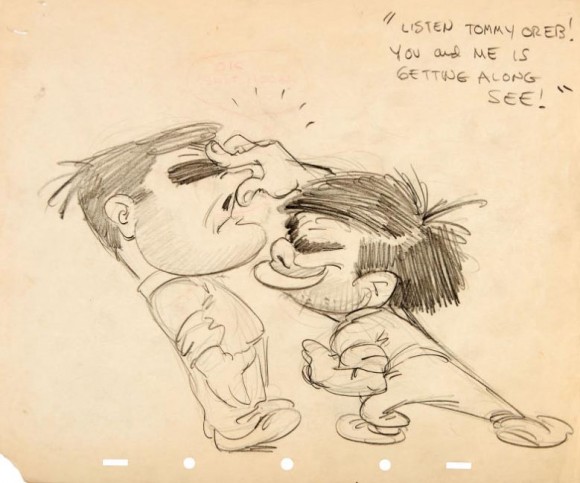
Tom Oreb is recognized by many as being one of the finest character designers during the Golden Age of Hollywood animation. Certainly, he was one of the most versatile. At Disney alone, he was the primary designer (or character stylist) of Toot Whistle Plunk and Boom, Sleeping Beauty, Paul Bunyan and 101 Dalmatians, among others. He also designed Tex Avery’s Symphony in Slang, Destination Earth for John Sutherland Productions, and the infamous “stylized Mickey” for Disney’s TV commercial unit:
Earlier in his career, Oreb had been one of Ward Kimball’s primary assistants on Jiminy Cricket in Pinocchio, Bacchus in Fantasia and the crows in Dumbo. A stash of his drawings from this era (1939-1941) recently turned up on the Hakes auction site. The drawings had belonged to Oreb’s first wife, Bonnie Barrett, who unbeknownst to all, had been alive until recently.
Because many of these drawings were done for his wife, they hint at their marital spats, albeit in humorous fashion. Another series of drawings alludes to Oreb’s love of surfing and beach bumming at Newport Harbor and Laguna Beach in Orange County, California. One drawing features a guest appearance by Salvador Dali, and another shows Oreb with his gruff supervisor Ward Kimball.















 Add a Comment
Add a Comment
Blog: Cartoon Brew (Login to Add to MyJacketFlap)
JacketFlap tags: American Motors, Nash, Victor Haboush, Advertising, Disney, Cartoon Modern, Hudson, Tom Oreb, Add a tag
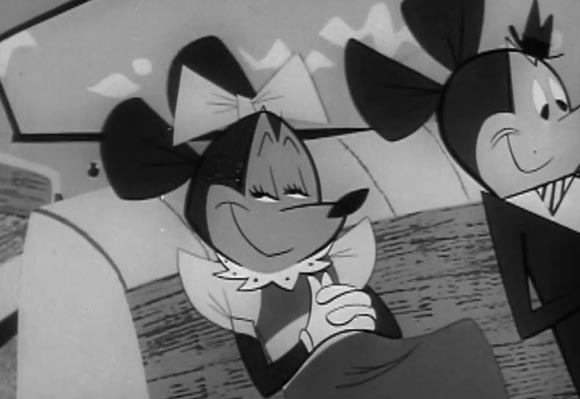
For a short period of time during the mid-1950s, the Disney company allowed corporations to use its characters to sell products. There’s some interesting history behind this, and if you’re interested in learning more, I’d recommend this two-part series by historian Jim Korkis (part one, part two).
Among the companies that took advantage of this opportunity was American Motors, maker of Nash and Hudson cars. (Interesting sidenote: the company’s president at the time was Mitt Romney’s father, George W. Romney.) Yesterday, YouTube user ZarakPhoto uploaded a fine collection of the American Motors spots featuring Jiminy Cricket and Mickey Mouse. I’ve seen other prints of these spots, but these are easily the crispest versions I’ve encountered and worth a look even if you’ve seen them before:
Here’s an upload from another YouTuber with a lower-quality version of one of the other spots featuring Song of the South characters:
The commercials were designed by Tom Oreb, who in my humble opinion, was the most versatile and skilled designer during the Golden Age of Hollywood animation. Oreb’s assistant art director and layout artist on these spots was Vic Haboush, who was a dear friend and mentor to me.
This is Oreb’s model sheet of the “commercial” Mickey Mouse, which Vic and I discovered in his personal collection many years ago. Click for a larger version:
Add a CommentBlog: Cartoon Brew (Login to Add to MyJacketFlap)
JacketFlap tags: Disney, Classic, Ward Kimball, Fred Moore, Tom Oreb, Bill Berg, Ken Walker, Add a tag
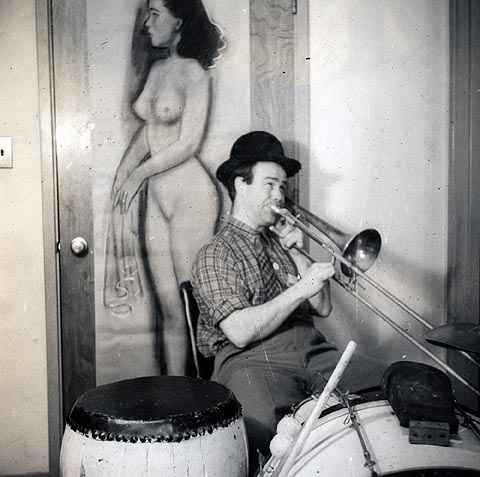
No matter how many books one reads about classic Disney animation, it’s difficult to imagine the day-to-day life of artists during the studio’s Golden Age. Obviously, we know the artists worked on films like Snow White and the Seven Dwarfs, Pinocchio, Dumbo, Fantasia and Bambi. And by most accounts, they had a pretty good time doing it. But what was the work environment like on any given day?
While I was writing my upcoming biography of Disney animator and director Ward Kimball (pictured up top), I was granted access to the personal journals that Ward kept during the 1940s. His writings provided a unique and unprecedented look into the day-to-day life at the Disney studio through the eyes of one of the studio’s most creative and gifted artists.
The journal entry reprinted below is from exactly seventy years ago today—August 7, 1942. There was a World War raging at the time and the studio’s regular output had been interrupted by the urgent demand for military training films and other war-themed shorts, like Education for Death, which Kimball was animating at the time. Here is Ward’s record of that warm August day in Burbank, California:
Friday, August 7, 1942
At the studio a kid – Kenny Walker— brought in 2 quarts of whiskey to celebrate his joining the Navy. We said, “Let’s wait til this afternoon.” “No,” says Fred [Moore], “now!” I mixed a big one with Coke at 11am. Got nice and glowy for our noon hour jam session. Tom [Oreb] really beat it out.I hit every note made for the trombone—My! My! We knocked the pants off of “Jingle Bells,” etc. At 1:00 the boys were really hitting it up—no work—at 2:00 we played records with everyone in the unit beating on something! I blew my trombone—[Jack] Whitaker his bass! People came from the far corners of the studio to hear us. What a din.
The 2 qts were gone—I counted 6 empties in the hallway. Bill Berg—separated from his wife 6 mo. was going out on his 1st date tonight—”Going to get some” he said—but, alas! He had too much—passed out cold—the nurse had to give him shots—then carried him to his car. Wow! Just like old times—wine, song, no women.
The moral of the story: if you run an animation studio, always have a nurse on staff.
Cartoon Brew |
Permalink |
3 comments |
Post tags: Bill Berg, Fred Moore, Ken Walker, Tom Oreb
Blog: Cartoon Brew (Login to Add to MyJacketFlap)
JacketFlap tags: Animators, Ward Kimball, Tom Oreb, Bob Givens, Dave Monahan, Dave Swift, Add a tag
A couple days ago, I wrote about Bob Givens, the 94-year-old artist who designed Bugs Bunny in his debut short A Wild Hare. While I was writing that post, I ran across a couple items related to Givens that are worth sharing. The first is a newspaper clipping from the Alhambra Post-Advocate annoucing that 18-year-old Bob Givens had been hired at Disney.
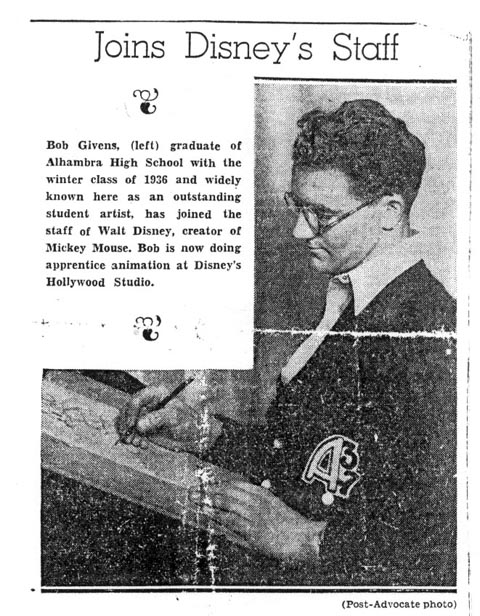
The second is an ambitious gag “bulletin” about Ward Kimball and his two assistants David Swift and Tom Oreb. The drawing, which makes fun of the trio’s lack of “mox”, is signed by Givens, who had moved over to Warner Bros. when this was drawn in October 1939, along with two WB writers Rich Hogan and Dave Monahan. Typically, gag drawings were confined to colleagues at the same studio, but there’s a reason why Warner Bros. artists are making fun of their Disney counterparts. At the time of this drawing, Givens lived with Swift (as well as Hogan and some other artists) in a rented mansion in Los Feliz. If any Cartoon Brew readers are in touch with Bob, ask him to explain the joke about “mox.” Inquiring minds want to know.

Cartoon Brew |
Permalink |
One comment |
Post tags: Bob Givens, Dave Monahan, Dave Swift, Tom Oreb



